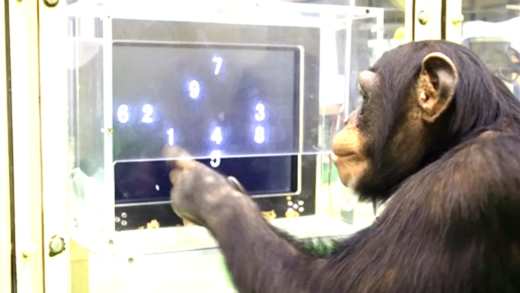Red-tailed hawks are adaptable predators found in diverse habitats across North America. They communicate through vocalizations and body language, playing an essential role in their ecosystem by controlling prey populations. While their conservation status is stable, threats like habitat loss and pollution remain. Protecting their environments is crucial for their continued survival.
Physical Characteristics of Red-Tailed Hawks: What Makes Them Unique?
Red-tailed hawks are fascinating birds of prey known for their distinctive physical characteristics. These birds can be recognized by their large size and broad wings, typically measuring about 18 to 26 inches in length. The most notable feature is their reddish-brown tail, which becomes more pronounced as they mature. This tail serves not only as a hallmark of their species but also plays a crucial role in their agility during flight.
In terms of coloration, red-tailed hawks exhibit a mix of brown, white, and cream on their bodies, with variations depending on the region. Their wings are often speckled with dark markings, providing excellent camouflage against the landscape. Interestingly, the coloration can vary significantly, with some hawks displaying lighter or darker plumage depending on their habitat and geographical location.
Moreover, red-tailed hawks possess sharp talons and a strong beak, essential tools for hunting. These adaptations make them effective predators, allowing them to capture a variety of prey. Their keen eyesight is another unique characteristic, enabling them to spot potential meals from great distances.
How Fast Can They Fly? Unleashing the Speed of Red-Tailed Hawks
Red-tailed hawks are not just about their striking appearance; they are also impressive flyers. These birds can reach speeds of up to 40 miles per hour when gliding and can dive at speeds exceeding 120 miles per hour during hunting. This remarkable speed is essential for their survival, allowing them to catch quick-moving prey such as rabbits and rodents.
Their flight patterns are also noteworthy. Red-tailed hawks often soar high in the sky, using thermal currents to gain altitude without flapping their wings excessively. This energy-efficient method of flying enables them to cover large distances while searching for food. Observing a red-tailed hawk soaring effortlessly is a testament to their extraordinary flying abilities.
Why Are They So Common in North America?
Red-tailed hawks are among the most common birds of prey in North America, and several factors contribute to their widespread presence. One significant reason is their adaptability to various habitats. They thrive in open fields, forests, and even urban areas, making them a familiar sight across the continent.
Another reason for their commonality is their diet, which is diverse and includes small mammals, birds, and reptiles. This flexibility in food sources allows them to survive in different environments and conditions. Their ability to adapt to human-altered landscapes has further increased their population.
Additionally, red-tailed hawks have few natural predators, which helps maintain their numbers. Conservation efforts have also played a role in protecting their habitats and ensuring their continued survival. As a result, these majestic birds remain a prevalent and beloved symbol of wildlife in North America.
What Do Red-Tailed Hawks Eat? A Look at Their Diet
Red-tailed hawks are skilled hunters with a diverse diet. Their primary food sources include:
- Small mammals (like rabbits and squirrels)
- Birds
- Reptiles
- Insects
- Occasionally carrion
These birds of prey have excellent hunting skills, often using their keen eyesight to spot potential meals from great distances. They prefer to hunt from a perch, allowing them to survey the area for movement. Once they identify their prey, they swoop down with remarkable speed and precision.
Interestingly, red-tailed hawks can adapt their diet based on availability. For instance, in urban areas, they may feed on pigeons and rats. This flexibility in diet helps sustain their population across various environments.
Mating and Raising Young: The Family Life of Red-Tailed Hawks
Red-tailed hawks are monogamous, often forming long-term pairs. Their courtship displays are quite fascinating, involving aerial acrobatics and vocalizations. The mating season usually occurs in late winter or early spring. After mating, they build large nests, typically high in trees or on cliffs.
The female usually lays 1 to 5 eggs, which both parents incubate for about 28 to 35 days. Once the chicks hatch, both parents are involved in feeding and protecting them. The young hawks fledge after about 6 to 7 weeks but depend on their parents for food for several more weeks.
This family-oriented approach ensures that the young hawks learn essential hunting skills before becoming independent. Parental care is crucial for their survival, as young hawks are vulnerable to predators and harsh weather conditions.
Color Variations: Beyond the Red
While red-tailed hawks are known for their characteristic reddish-brown tails, they exhibit a range of color variations. These can include:
- Light morphs with pale coloration
- Dark morphs with rich brown hues
- Intermediate morphs that blend features of both
The color variations are influenced by factors such as geographic location and habitat. For example, hawks in desert regions may appear lighter to blend in with their surroundings, while those in forested areas may have darker plumage.
These variations not only serve aesthetic purposes but also enhance their camouflage, aiding in hunting and protection from predators. Observing these differences can be an exciting aspect of birdwatching for enthusiasts.
Typical Habitats of Red-Tailed Hawks
Red-tailed hawks thrive in a variety of habitats across North America, making them highly adaptable birds. Their typical habitats include:
- Open Fields: These areas provide ample opportunities for hunting small mammals.
- Forests: Red-tailed hawks can be found in wooded regions, where they often nest in tall trees.
- Urban Areas: Surprisingly, they have adapted to city environments, utilizing buildings as perches.
- Cliffs and Mountains: These locations offer vantage points for spotting prey.
Each of these habitats allows red-tailed hawks to utilize their hunting skills effectively. Their ability to adapt to various environments has contributed significantly to their commonality in North America.
Communication: How Red-Tailed Hawks Talk to Each Other
Red-tailed hawks have a unique way of communicating with one another. Their vocalizations include a series of sharp, high-pitched calls that can be heard over long distances. These calls serve various purposes, such as:
- Territorial Defense: Males often call to warn other hawks to stay away from their territory.
- Mate Communication: During courtship, vocalizations help strengthen pair bonds.
- Alarm Calls: They use specific sounds to alert others about potential threats.
Besides vocalizations, red-tailed hawks also communicate through body language. They may perform aerial displays or engage in specific postures to convey messages to their partners or rivals. This combination of vocal and non-vocal communication is essential for their social interactions and survival.
Role in Ecosystem: What Do They Contribute?
Red-tailed hawks play a crucial role in their ecosystem as apex predators. Their presence helps maintain a balanced food web by controlling populations of small mammals and birds. Some key contributions include:
- Pest Control: By preying on rodents, they help manage pest populations that can damage crops.
- Food Source for Other Animals: Their carcasses provide nourishment for scavengers like vultures and coyotes.
- Indicator Species: Healthy populations of red-tailed hawks indicate a balanced ecosystem, as they require a stable environment to thrive.
Through these contributions, red-tailed hawks enhance biodiversity and promote ecological health, making their conservation vital.
Conservation Status: Are They Endangered or Threatened?
The conservation status of red-tailed hawks is currently stable, and they are not considered endangered or threatened. Their adaptability to various environments and diet flexibility have helped maintain their populations. However, they do face threats from:
- Habitat Loss: Urbanization and agricultural expansion can reduce their nesting and hunting grounds.
- Pollution: Pesticides and chemicals can affect their health and reproductive success.
- Collisions: Vehicles and power lines pose risks during their hunting flights.
Conservation efforts focus on protecting their habitats and promoting awareness of their ecological importance. By safeguarding their environments, we can ensure the continued success of these magnificent birds.





Comments are closed.